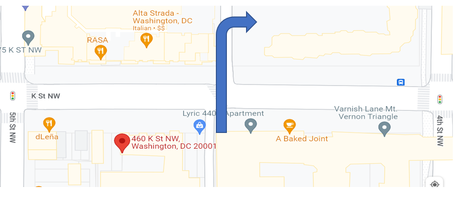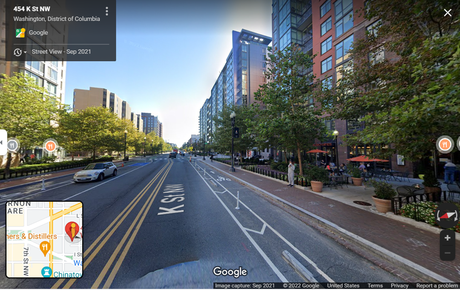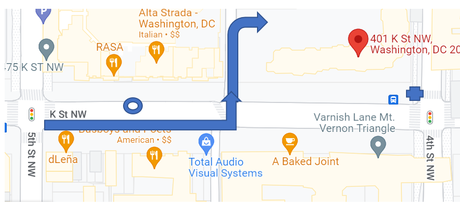“When someone shows you who they are, believe them the first time.” Maya Angelou
The first episode of the David Black story laid out the official story of the case, followed by six reasons why it couldn’t possibly be true. The official story was that David Black fired two shots at a fleeing James “June Bug” Smith, accidently killing an elderly woman as she walked home from church. To make this case, the government used two witnesses who said they witnessed the event from a nearby apartment building.
You will have to read the first episode to appreciate how impossible the official story is. I provide reader-friendly maps and diagrams.
The weird evolution of the official story reminds me of a charming incident from A.A. Milne’s Winnie the Pooh books. Pooh’s friend Rabbit goes to visit Christopher Robin and discovers a curious note:
GON OUT
BACKSON
BISY
BACKSON
Unable to decipher the message, Rabbit consults with Owl, a pompous windbag who knows little and talks much.
’It is quite clear what has happened, my dear Rabbit,’ Owl announces. ‘Christopher Robin has gone out somewhere with Backson. He and Backson are busy together. Have you seen a Backson anywhere about the Forest lately?”
Rabbit has no idea what a “Backson is”.
‘Well,’ explained Owl, ‘the Spotted or Herbaceous Backson is just a . . . at least it’s really more of a . . . well, the fact is, I don’t know what they’re like.”
‘Thank you,’ said Rabbit, and hurried off to ask Winnie the Pooh if he had “seen a Spotted or Herbaceous Backson in the Forest, at all?”
Eventually, Christopher Robin, explains that “GON OUT BACKSON” is a first-grader’s attempt to write, “Gone out, back soon.”
The official story that Alice Chow was killed by a stray bullet fired by David Black is, quite simply, a Spotted or Herbaceous Backson.
An article in the Washington Post published the day after the shooting provides a snapshot of where the story stood hours after the crime. The Post article was published on February 3, 1997, but the information was provided the evening of the 2nd.
“Stray Bullet Kills Elderly D.C. Woman,” the headline read. How did the police know Alice Chow was felled by a bullet intended for someone else? None of the street witnesses or first-responding police officers who testified at trial saw anything of the sort.
The street witnesses, all members of Lilly Memorial Baptist Church, saw Alice Chow stagger and fall. Then they saw a man in military fatigues jog across K street at the 41/2 Street crosswalk. That’s about the extent of it.

Moments later, when the first two police officers arrived on the scene, the street witnesses were all pointing in the direction of apartment building. An assistant pastor from Lilly Memorial Church gave chase, pausing when he got to the parking lot behind the apartment building (curved arrow) because he heard the police and EMS sirens.

The first officer on the scene went to the shooting victim (indicated by the circle). The second officer to arrive (quickly assisted by other officers) chased after the man in fatigues. The security guard in the parking lot identified the running man as Darrell Haskell, a man who often delivered groceries for elderly residents. The officers were given four rooms where Haskell could likely be located.
Trial testimony shows that no one on the street saw a gun; but it was generally believed that the man in fatigues might be the shooter.
Police officers visited two apartments on the sixth floor, then raced down to apartment 305 where Haskell was apprehended. The officers conducted a futile search for a weapon, then escorted their prisoner down to the street where he was identified by street witnesses. Haskell was then transported to police headquarters for questioning.
That was all the police had to go on. And yet the Washington Post article spelled out how police believed the tragedy unfolded. “An elderly woman who was prominent in Washington’s Chinese community was killed while walking home from church on the edge of downtown yesterday,” the article began, “when she was struck by a bullet that police said apparently was aimed at somebody else.”
Then came the details. The “stray bullet” readers learned, “was apparently intended for someone several hundred feet away.” In the final form of the official story, by contrast, the shooter was less than forty feet from the victim.
“Several people said they saw two men in a dispute down the street,” the reporter stated. “The witnesses said that at least one of the men appeared to draw a gun and shoot at the other. Then, witnesses said, the two men fled in opposite directions as Chow fell.”
None of the street witnesses interviewed minutes after the shooting reported anything of the kind. . No one saw a gun. No one saw the shooter. No one witnessed an argument. So, who are the “several people” who did witness these things?
At a pre-trial hearing nine months after the shooting, defense attorney Charles Farquhar thumbed through the sheaf of “discovery materials” he had just received from the assistant U.S. Attorney. A peculiar detail from an early police report caught his attention. According to one witness, “June Bug and Little Darryl” had been beefing “across the street from the church.”
“Little Darryl” turned out to be Darrell Haskell, the man in military fatigues who attracted the attention of street witnesses. This is the first, and only, reference to an argument police encountered. Nobody on the street saw James “June Bug” Smith running from a gunman, but somebody said they did.
Most significantly, the action in this new account didn’t unfold “several hundred feet away” from where Alice Chow fell—it happened right across the street.
The detail scribbled down on an investigator’s notepad is remarkably close to the official story told at trial. Except the shooter wasn’t David Black; it was Darrell Haskell.
Witnesses on the street did report seeing a Black male (minister Christopher Starghill) chasing after a second Black male (Darrell Haskell). The Post article placed the runner and the shooter close to the intersection of 4th and K streets because that’s where investigators discovered a shell casing (see the cross on the map below).

The story that appeared in the Post on February 3, 1997, mixed elements of two entirely unrelated stories.
It quickly became clear that Mr. Haskell was unconnected to the shooting. Then forensic analysis showed that the shell casing on the corner of 4th street didn’t match the bullet found in the victim’s clothing.
On the day of the shooting, Larry Johnson was visiting in Apartment 305 with Giles Richmond and Darrell Haskell. The trio planned to drink a few beers and watch the Pro Bowl game as soon as Johnson returned from running his errands.
Larry Johnson had been banned from the building, so his mere presence constituted a violation. He had been banned because he was facing breaking and entering charges. When he failed to show up for a court hearing, a bench warrant had been issued for his arrest. This meant Larry couldn’t talk to the police without being arrested. Nonetheless, he stepped forward. Likely on the day of the shooting.
Even after Darrell Haskell was fully exonerated and James “June Bug” Smith denied having been at the scene, the runner-shooter theory survived. Detective Joseph Fox stood by Larry Johnson. He was the only witness who could corroborate the stray bullet theory.
In A. A. Milne’s charming tale, Rabbit embraced Owl’s ridiculous story about the Spotted and Herbaceous Backson with unwarranted enthusiasm. Everyone in the Hundred Acre Wood knew Owl was a big-talking show-off with a reputation for embellishing stories–or making them up altogether. But Rabbit wanted to know what “Gon out Backson” meant, and Owl’s account was the only answer at his disposal.
When Larry’s “Little Darryl” story failed to pan out, Fox should have dropped him like a hot rock. Instead, he told Larry to give him a more plausible story. If it wasn’t Darrell Haskell shooting at June Bug, who was it?
Against all evidence, Fox believed that Ms. Chow had been felled by a stray bullet. Why would anyone intentionally gun down an innocent woman in broad daylight? Besides, if the crime was premeditated, the shooter was unlikely to be found, and this case had to be closed. People were frightened. They were demanding answers.
The street witnesses stook in perfect agreement; but they didn’t give Fox the shooter he was looking for. Larry Johnson did.
You’re probably wondering how David Black swapped places with “Little Darryl” in Larry’s story? That’s for next time.
Email Address:
- Police Generated Testimony 2: The Spotted or Herbaceous Backson
- Police-generated testimony 1: Six Impossible things before breakfast
- Police-generated testimony 1: David Black is innocent (and I can prove it)
- A day of reckoning in Winona, Mississippi: Why Fannie Lou Hamer and Curtis Flowers are forever united in a corner of my mind
- Returning to the scene of the crime
